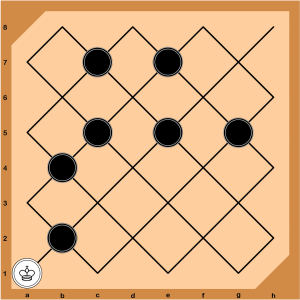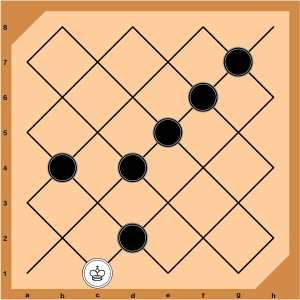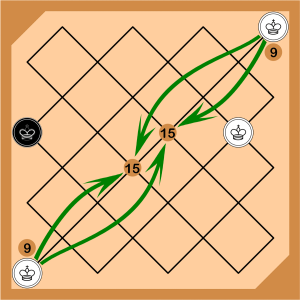Kumuschiwa everyone! In my previous post—How to Play Filipino Checkers—we learned how to play Filipino Dama. In this post, we will look into and learn different notations for the game.
Before we start, I would just like to congratulate myself for reaching 20 posts with my last. Yey! Banzai! 🤘
All right. let’s start! 😊
Table of Contents
Algebraic Notation
The first notation that we will look into is the Algebraic Notation. It is actually the standard method for recording moves in a chess game which is also used for Filipino Dama.
Board
Each column or file is labeled “a” to “h” from left to right while each row or rank is numbered “1” to “8” from bottom to top. This is from the point of view of the player with the white pieces. Each point or square is then identified by a coordinate pair of a letter and a number based on the column and row. For example, the square at the bottom left corner of white is “a1” while the square at the bottom left corner of black is “h8”.
Below is how it will be labeled on a dama matrix and a checkerboard for both the Luzon Board and the Vismin Board.
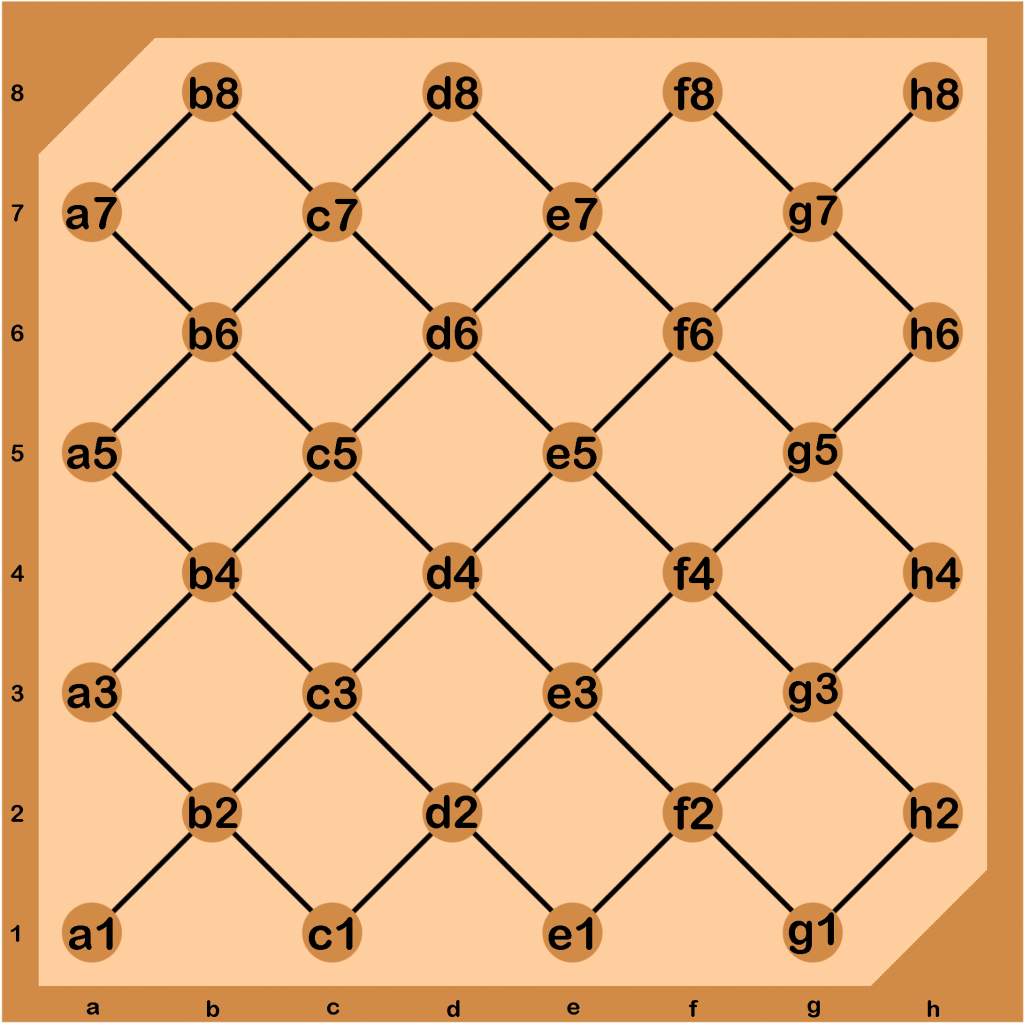
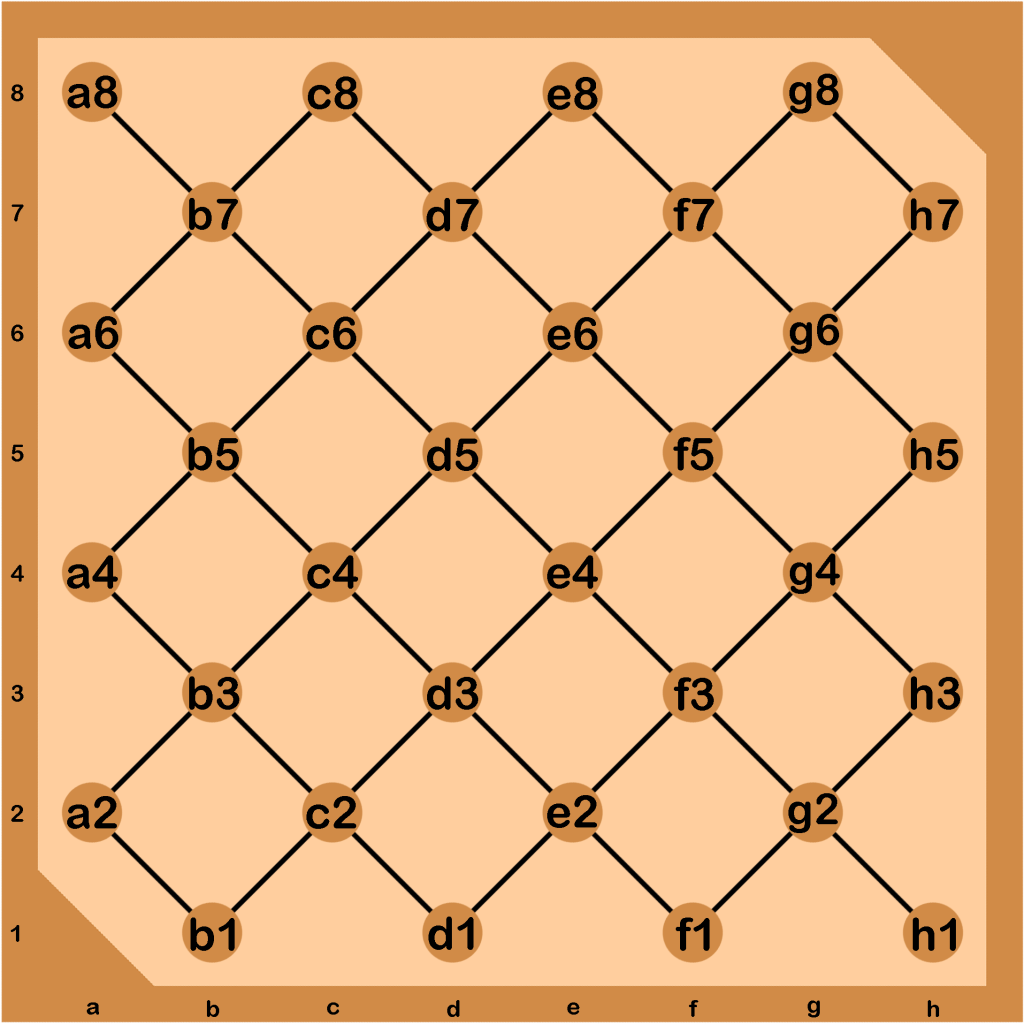
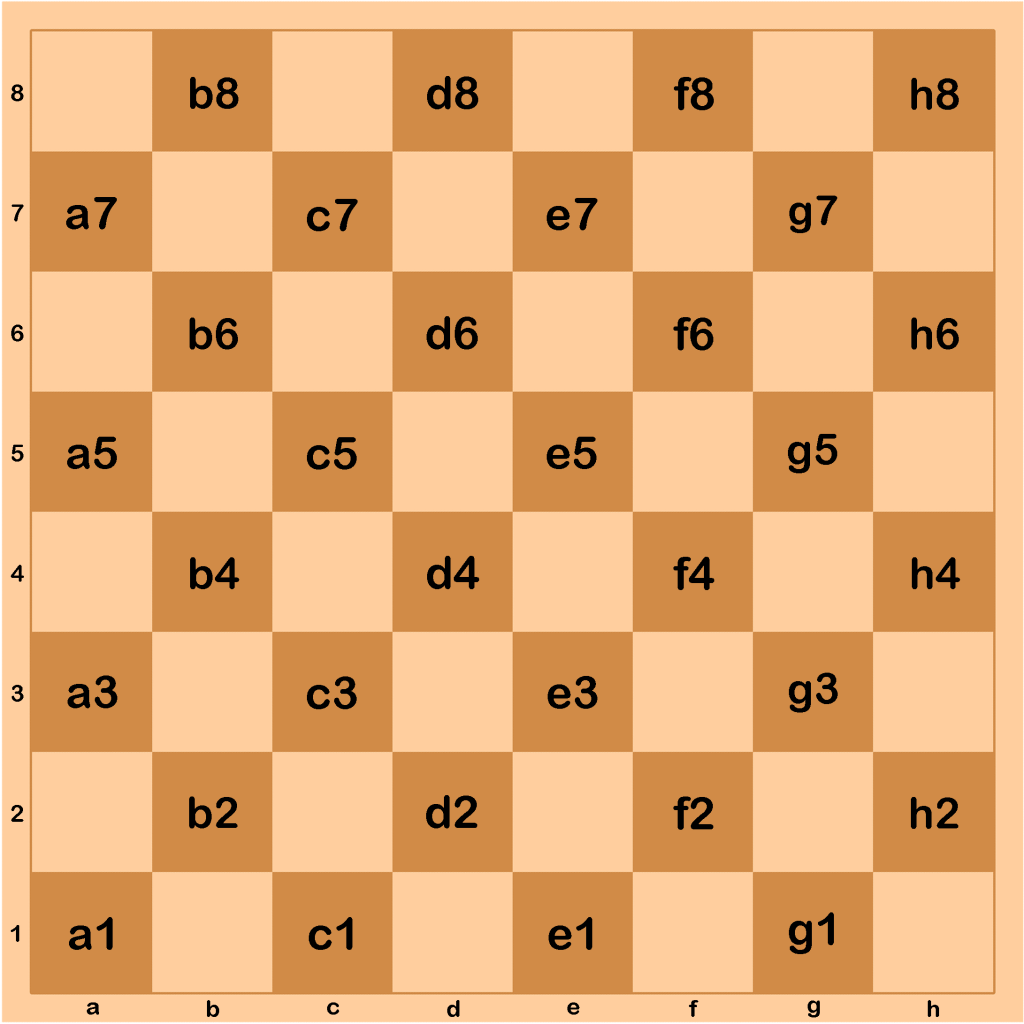
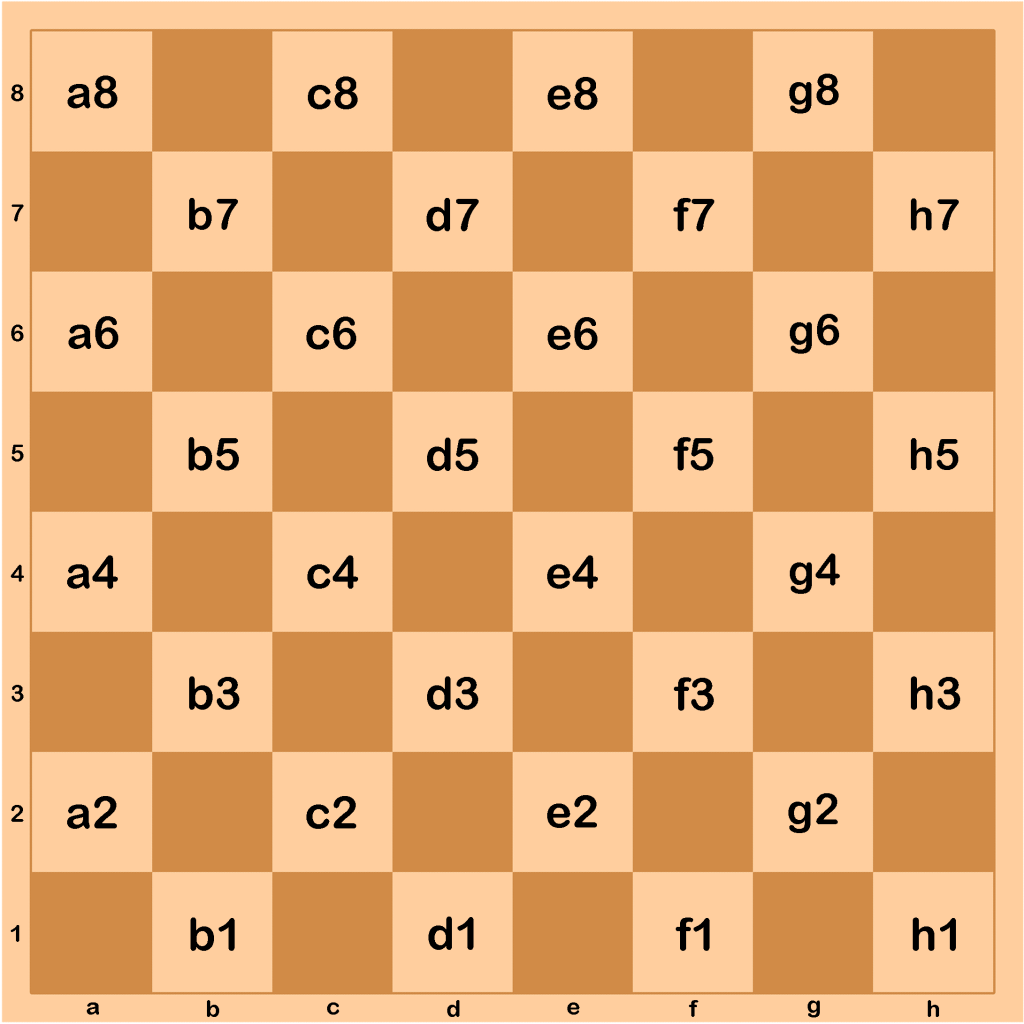
Moves and Captures
Moves are counted in pair which consist of both player’s move.
Moves are indicated by their number count followed by a dot. Then the points of origin and destination separated by a dash for each player. A space separates the move count and individual moves of each player (e.g., 1. c3-d4 f6-e5).
The example means that it is the first move in the game for each player—indicated by the number “1” at the start—of which the white piece from point c3 moves to point d4 answered by black moving a piece from point f6 to point e5.
Captures are similar except that it uses a lowercase letter “x” in place of the dash (e.g., c3xe5). This means that the piece on point c3 jumps and captures a piece (on point d4) then lands on point e5.
Recording Position
In some instances, you may want to analyze directly from a certain position of a game or you may want to show or solve a dama puzzle. In this case, we can use Forsyth–Edwards Notation (FEN) to describe the position which is indicated by:
- Whose turn to play (W for white or B for black) followed by a colon
- The letter W followed by point or square coordinates of white pieces then a colon
- The letter B followed by point or square coordinates of black pieces
A letter “K” is added before the coordinate if the piece in that point is a king or a dama. The sequence of the coordinates doesn’t matter, but coordinates should be separated by commas without any spaces.
Here is how it will be notated for the initial setup of a game on a Vismin Board:
W:Wa1,c1,e1,g1,b2,d2,f2,h2,a3,c3,e3,g3:Bb8,d8,f8,h8,a7,c7,e7,g7,b6,d6,f6,h6
Multiple Captures and Disambiguation
For multiple captures, only the points of origin and last destination is indicated unless there are more than one sequence of captures with the same points of origin and last destination. If that is the case, a longer notation with all the intermediate points is written to disambiguate. This will also determine which pieces were captured.
Let’s look at the position below with white to move (W:WKa1:Bb2,b4,c5,e5,g5,c7,e7) as an example. The white king can capture a maximum of 6 enemy pieces in this turn which can be achieved in four ways:
- a1xb6 or a1xa7
- a1xa5
- a1xh6
- a1xh6
Choosing the first or second sequence and notating it that way is fine as they are both unique. However, the third and fourth sequences have the same notation and will cause confusion if just notated that way. Thus, it should be notated as “a1xc3xf6xd8xa5xd2xh6” for the third or “a1xc3xf6xd8xb6xe3xh6” for the fourth.
Please note that all the intermediate points should be indicated. For captures made by a king, the intermediate points should be the one immediately after the captured piece if there is no change in direction. That is why we notated it as “a1xc3…” and never “a1xd4…” for this example.
Just for the sake of clarity, here are the notations of the four above with all the intermediate points:
- a1xc3xa5xd8xf6xd4xb6 or a1xc3xa5xd8xf6xd4xa7
- a1xd4xb6xd8xf6xc3xa5
- a1xc3xf6xd8xa5xd2xh6
- a1xc3xf6xd8xb6xe3xh6
Another example is the position below with white to move (W:WKc1:Bd2,b4,d4,e5,f6,g7). There are 4 ways to capture “c1xa3” thus we need to disambiguate it to either:
- c1xe3xc5xa3
- c1xf4xd6xa3
- c1xg5xe7xa3
- c1xh6xf8xa3
Result
The game result is indicated by either 1-0 (white won), 0-1 (black won) or ½-½ (draw).
Draught/Checkers Notation
The next notation is the standard Draught Notation or Checkers Notation. This notation can also be used for Filipino Dama.
Since the Vismin Board has the same orientation and similar rules as that of the International, Canadian and Brazilian Checkers, then we can use the same numbering method which is 1 to 32 from top to bottom from white’s point of view. The English Draughts / American Checkers as well as the Pool Checkers are also using this numbering.

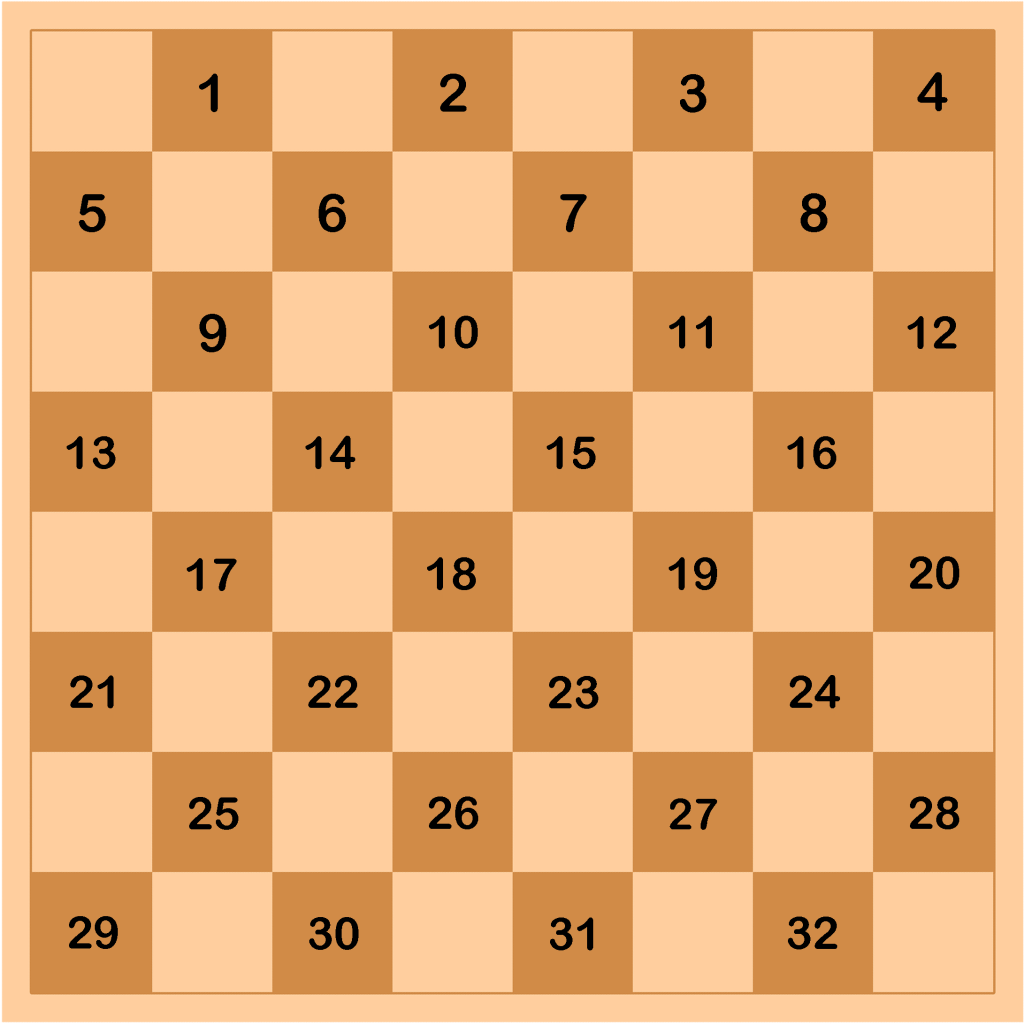
We can mirror the same numbering horizontally to the Luzon Board to easily transpose notations from one orientation to another (e.g., move “22-18” from both dama board orientations is still the same but just mirrored).
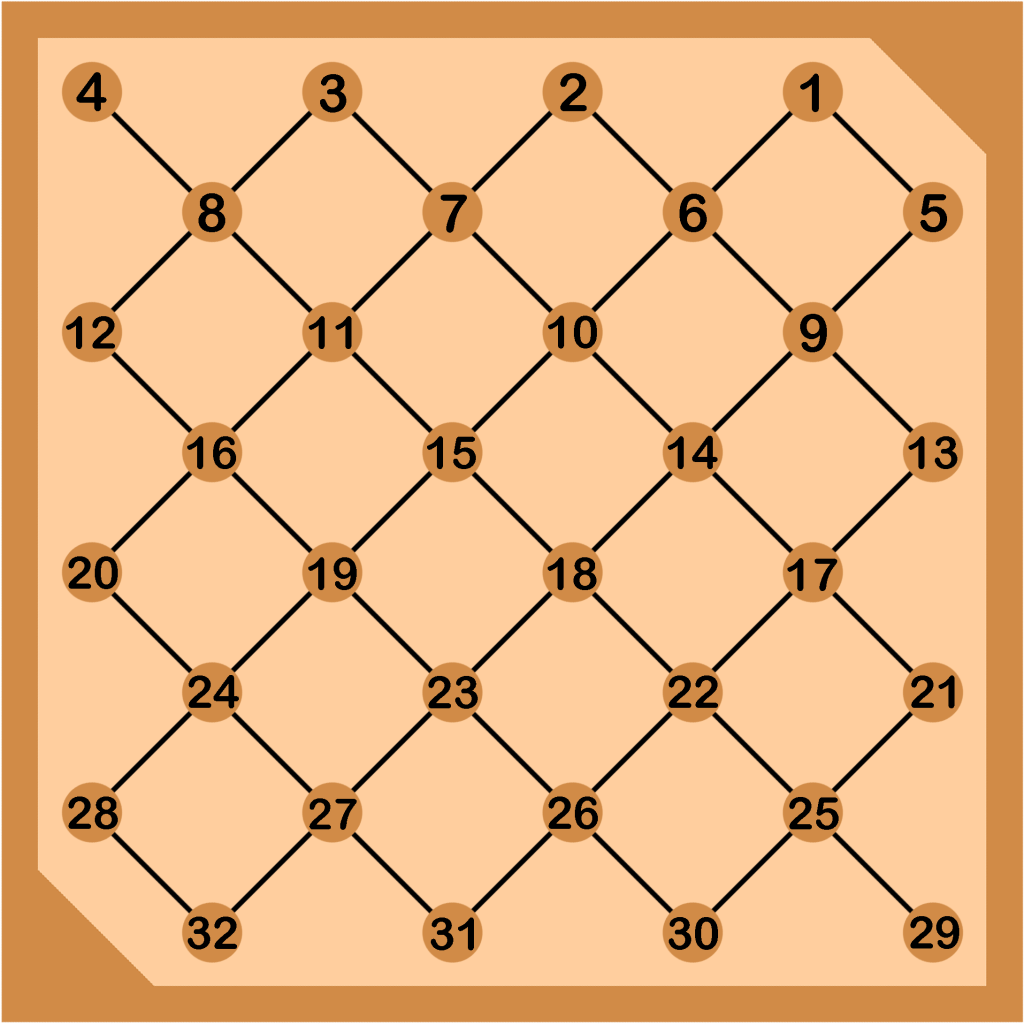
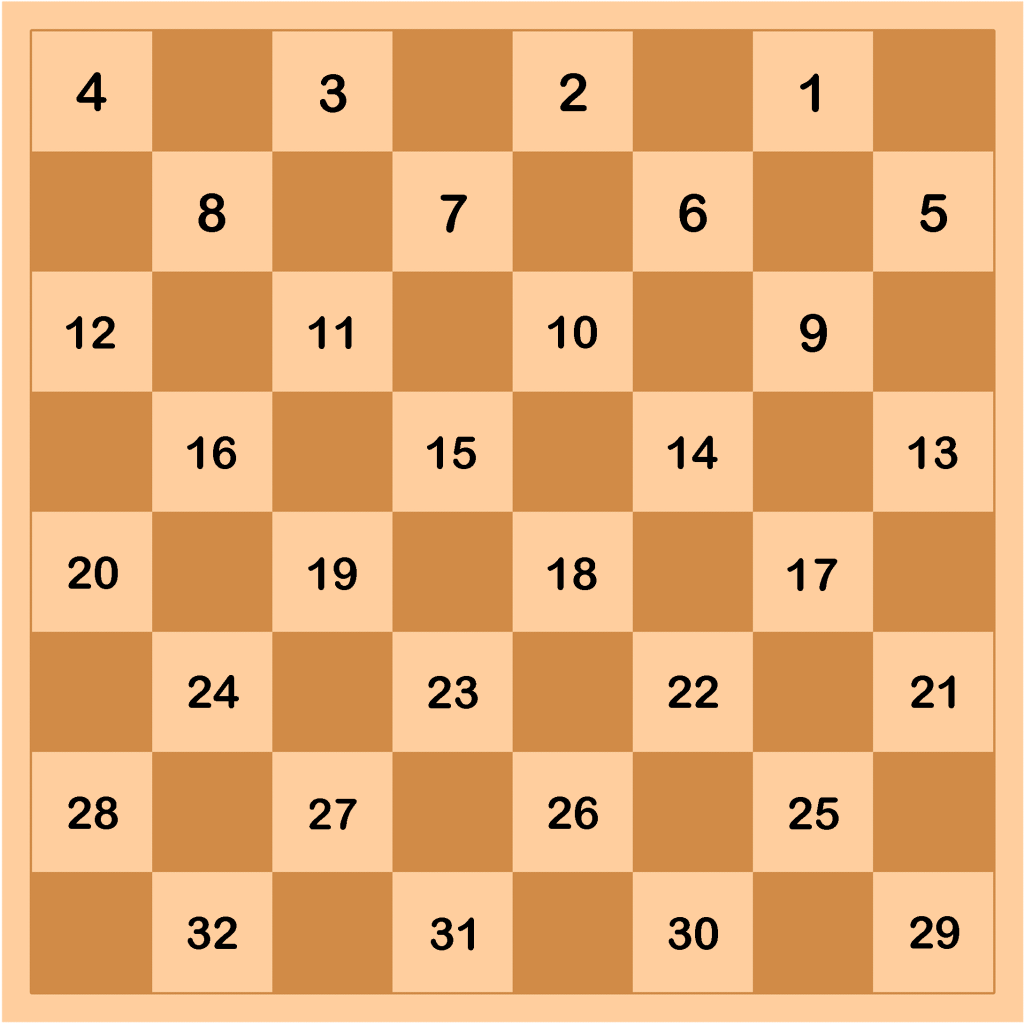
Moves, captures, recording positions and results are also notated the same way as algebraic notation but using the numbering above instead of coordinates.
Dama Notation
Lastly, we have the local Dama Notation. The numbering is a little bit different and peculiar in this notation. No one knows why the sequence is like the way it is nor who created it, but it goes like these:
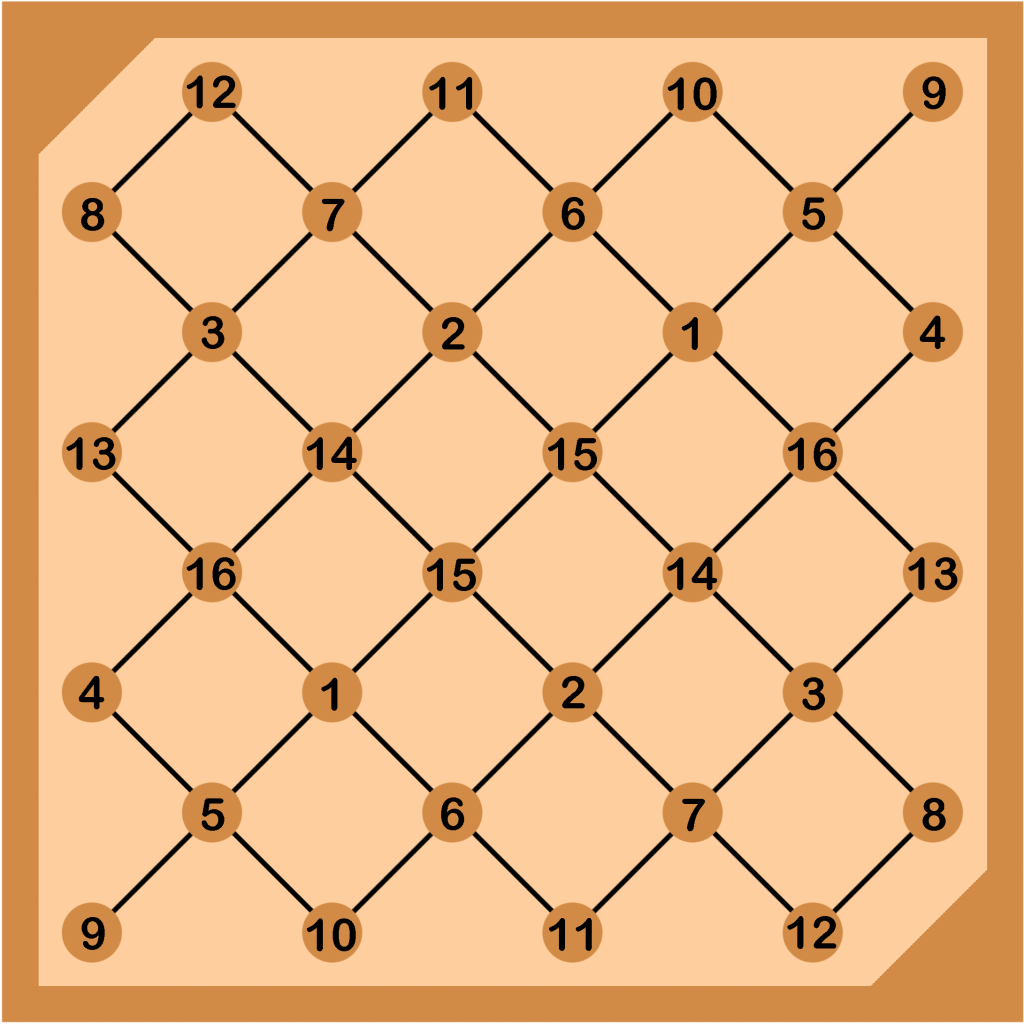
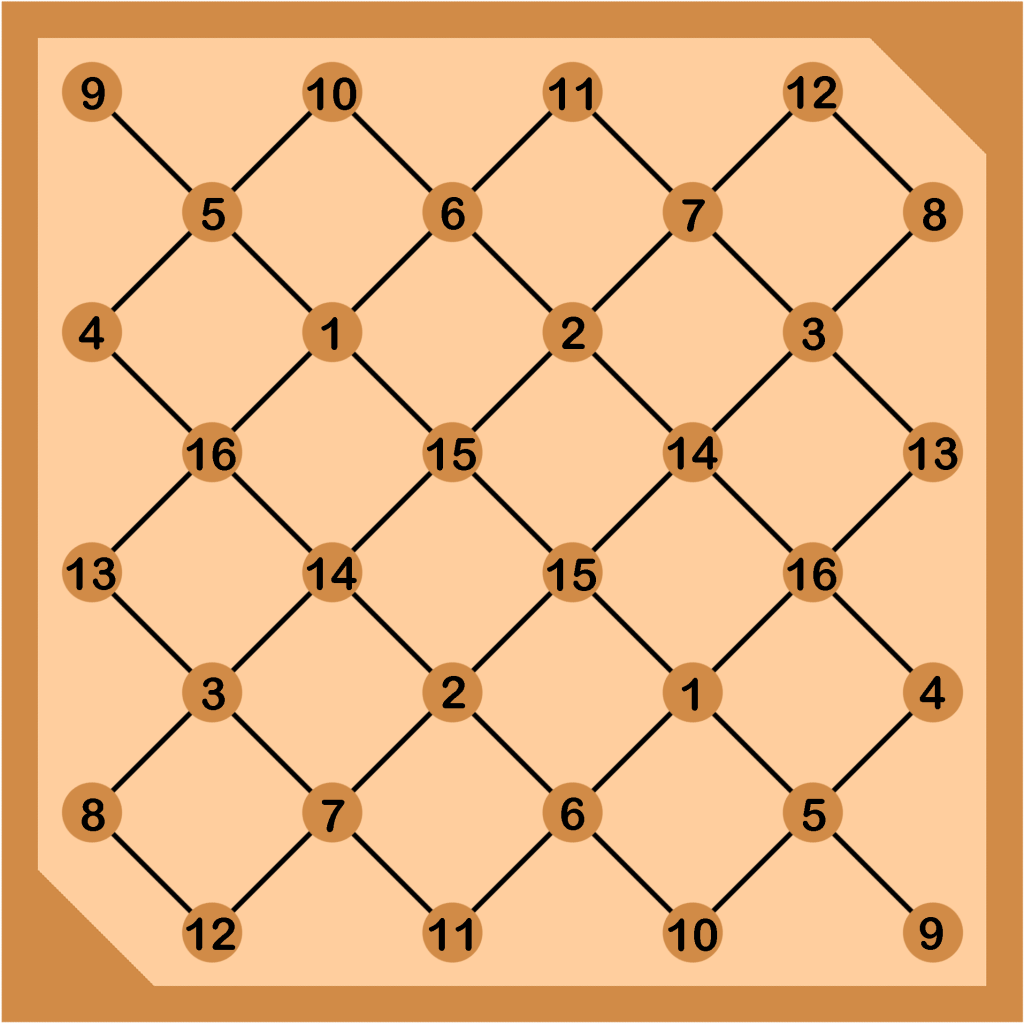
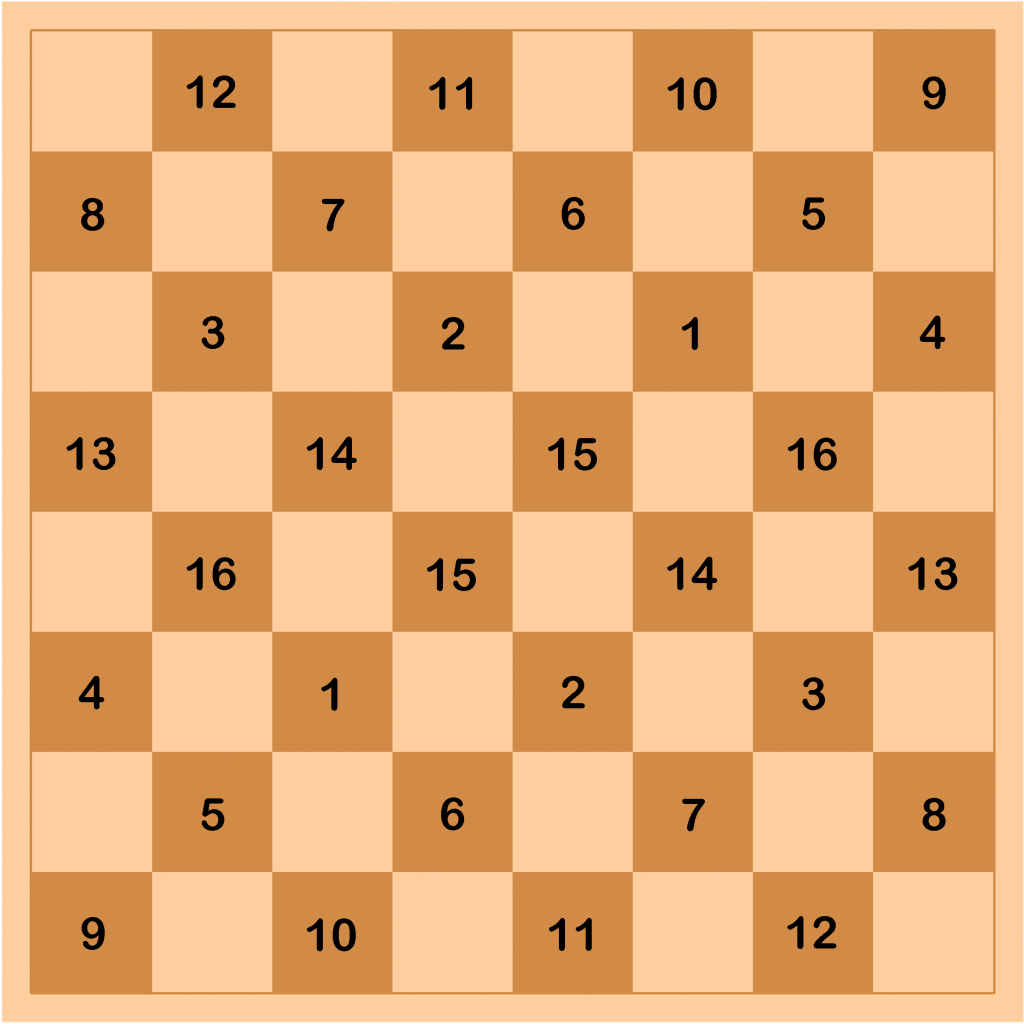
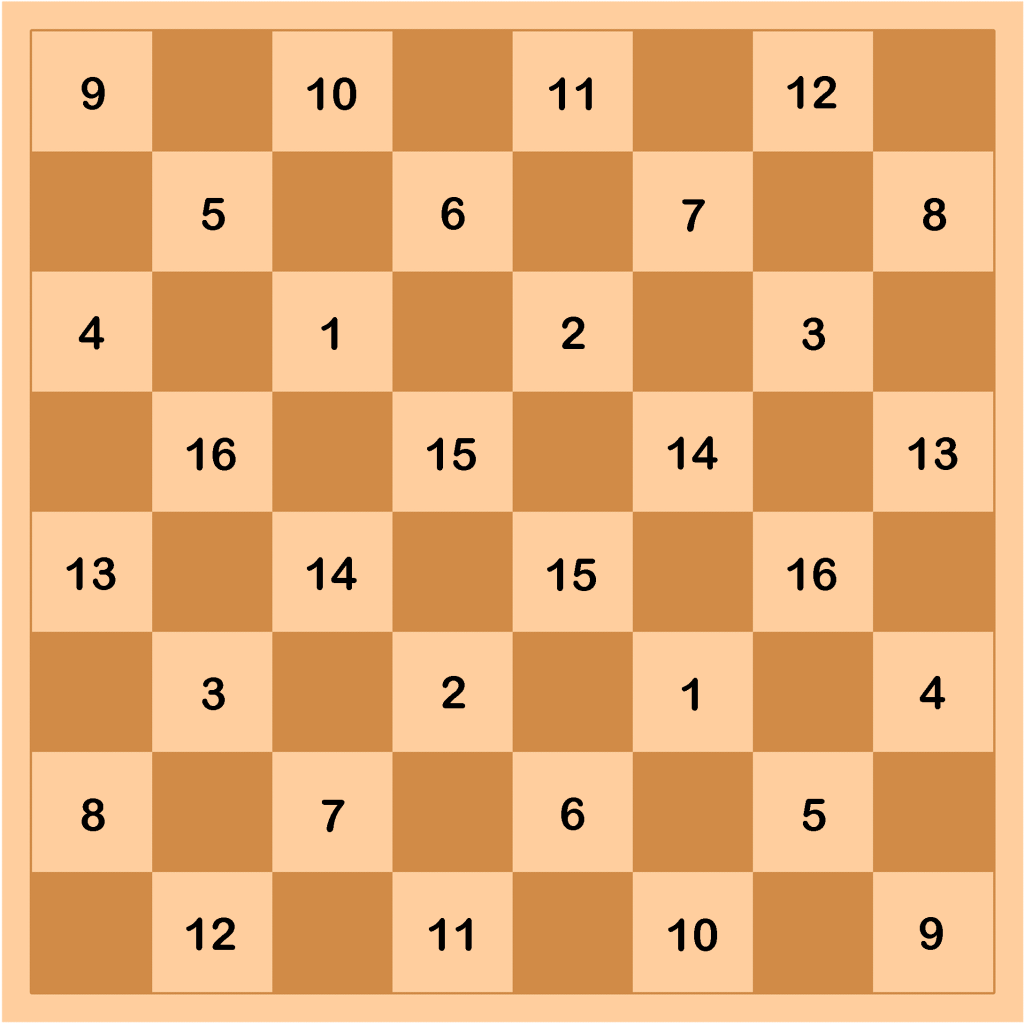
Moves, recording positions and results are notated the same way as algebraic notation but using the numbering above. However for captures, either a dash or a lowercase “x” is used.
Ambiguity
Notice that there are two sets of 16 numbers for this notation. This may cause ambiguities especially during endgame.
Let’s take the position below (W:WK7,K6,K9:BK13) as an example with next moves as “9-15 13-11”. The problem here is that there are two points numbered 15 and 11 that you can reach from points 9 and 13 respectively.
Another example is if there are kings on both points 9 (W:WK9,K16,K9:BK13) and the next move is “9-15”. It’s confusing since both kings on each point 9 can reach both points 15.
Despite the ambiguities, expert dama players can easily read this notation. It may, however, be impractical to use it for recording games in the long run and especially if you would want to run or load it to a computer program.
Which Notation to Use?
As of this writing and as far as I know, there’s currently no official governing body that oversees checkers here in the Philippines and on which notation should officially be used. However, I would recommend that you learn all three of them.
For practicality, using either the standard numeric Draught/Checkers Notation or the alphanumeric Algebraic Notation is recommended as they are widely used internationally and officially by the World Draughts Federation. These two are also supported in Portable Draughts Notation (.PDN).
And despite possible confusions, local Dama Notation is widely used here in the Philippines among damadors and in the dama communities. Thus learning it is also recommended.
Sample Comparison
Click to view notation comparison of the same game.
| Algebraic (Luzon Board) | Algebraic (Vismin Board) | Draughts/Checkers | Dama |
| 1. d3-e4 e6-d5 2. h3-g4 f7-e6 3. g2-h3 g6-f5 4. e4xg6 h7xf5 5. e2-d3 g8-f7 6. d3-c4 f7-g6 7. g4-h5 f5-e4 8. h5xf7 e4xg2 9. h1xf3 e6xg8 10. c4xe6 d7xf5 11. d1-e2 c8-d7 12. c2-d3 e8-f7 13. b1-c2 a6-b5 14. b3-c4 b5-a4 15. f3-e4 f7-g6 16. a2-b3 b7-a6 17. e4-d5 c6xe4 18. h3-g4 f5xh3 19. d3xh7 d7-c6 20. e2-f3 c6-b5 21. c4-d5 b5-c4 22. f3-g4 c4xa2 23. g4-f5 a8-b7 24. c2-d3 b7-c6 25. d5xb7 a6xc8 26. f5-g6 a4-b3 27. g6-f7 g8xe6 28. d3-e4 b3-c2 29. h7-g8 c2-b1 30. g8xd5 b1xh7 31. d5-f7 a2-b1 32. f7-e8 h7-e4 33. e8-f7 b1-c2 34. f7-e8 c2-d1 35. e8-f7 e4-g2 36. f7-c4 g2-b7 37. c4-g8 d1-f3 38. g8-e6 f3-h5 39. e6-c4 h5-d1 40. c4-e6 d1-g4 ½-½ | 1. e3-d4 d6-e5 2. a3-b4 c7-d6 3. b2-a3 b6-c5 4. d4xb6 a7xc5 5. d2-e3 b8-c7 6. e3-f4 c7-b6 7. b4-a5 c5-d4 8. a5xc7 d4xb2 9. a1xc3 d6xb8 10. f4xd6 e7xc5 11. e1-d2 f8-e7 12. f2-e3 d8-c7 13. g1-f2 h6-g5 14. g3-f4 g5-h4 15. c3-d4 c7-b6 16. h2-g3 g7-h6 17. d4-e5 f6xd4 18. a3-b4 c5xa3 19. e3xa7 e7-f6 20. d2-c3 f6-g5 21. f4-e5 g5-f4 22. c3-b4 f4xh2 23. b4-c5 h8-g7 24. f2-e3 g7-f6 25. e5xg7 h6xf8 26. c5-b6 h4-g3 27. b6-c7 b8xd6 28. e3-d4 g3-f2 29. a7-b8 f2-g1 30. b8xe5 g1xa7 31. e5-c7 h2-g1 32. c7-d8 a7-d4 33. d8-c7 g1-f2 34. c7-d8 f2-e1 35. d8-c7 d4-b2 36. c7-f4 b2-g7 37. f4-b8 e1-c3 38. b8-d6 c3-a5 39. d6-f4 a5-e1 40. f4-d6 e1-b4 ½-½ | 1. 23-18 10-15 2. 21-17 6-10 3. 25-21 9-14 4. 18×9 5×14 5. 26-23 1-6 6. 23-19 6-9 7. 17-13 14-18 8. 13×6 18×25 9. 29×22 10×1 10. 19×10 7×14 11. 31-26 3-7 12. 27-23 2-6 13. 32-27 12-16 14. 24-19 16-20 15. 22-18 6-9 16. 28-24 8-12 17. 18-15 11×18 18. 21-17 14×21 19. 23×5 7-11 20. 26-22 11-16 21. 19-15 16-19 22. 22-17 19×28 23. 17-14 4-8 24. 27-23 8-11 25. 15×8 12×3 26. 14-9 20-24 27. 9-6 1×10 28. 23-18 24-27 29. 5-1 27-32 30. 1×15 32×5 31. 15-6 28-32 32. 6-2 5-18 33. 2-6 32-27 34. 6-2 27-31 35. 2-6 18-25 36. 6-19 25-8 37. 19-1 31-22 38. 1-10 22-13 39. 10-19 13-31 40. 19-10 31-17 ½-½ | 1. 2-15 2-15 2. 4-16 7-2 3. 5-4 3-14 4. 15×3 8×14 5. 6-2 12-7 6. 2-14 7-3 7. 16-13 14-15 8. 13×7 15×5 9. 9×1 2×12 10. 14×2 6×14 11. 11-6 10-6 12. 7-2 11-7 13. 12-7 4-16 14. 3-14 16-13 15. 1-15 7-3 16. 8-3 5-4 17. 15-15 1×15 18. 4-16 14×4 19. 2×8 6-1 20. 6-1 1-16 21. 14-15 16-14 22. 1-16 14×8 23. 16-14 9-5 24. 7-2 5-1 25. 15×5 4×10 26. 14-3 13-3 27. 3-7 12×2 28. 2-15 3-7 29. 8-12 7-12 30. 12×15 12×8 31. 15-7 8-12 32. 7-11 8-15 33. 11-7 12-7 34. 7-11 7-11 35. 11-7 15-5 36. 7-14 5-5 37. 14-12 11-1 38. 12-2 1-13 39. 2-14 13-11 40. 14-2 11-16 ½-½ |
All right, I guess that’s all for now about Filipino Dama notations. I hope I was able to impart a knowledge or two about it. Should you have any questions or clarifications, please don’t hesitate to comment down below. Thank you for reading and enjoy playing dama! You are loved! God Bless =>
*Photo used for featured image by Sikes Photos on Pexels


